Cerclage wires and neutralization plate
1. Introduction
Cerclage wires combined with a neutralization plate are mainly used for long oblique fractures.
Note: Cerclage wires should only be used for fragments with a long contact zone to the main fragment. Wires with eyelet tightening offer a greater guarantee of stability than those tightened with twist.
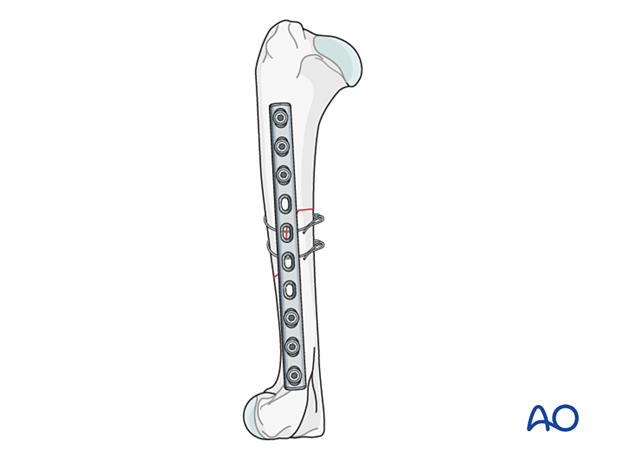
2. Preparation and approach
The positioning and approach depend on the fracture location.
For more proximal fractures, a lateral approach with the patient positioned in lateral recumbency is preferred.
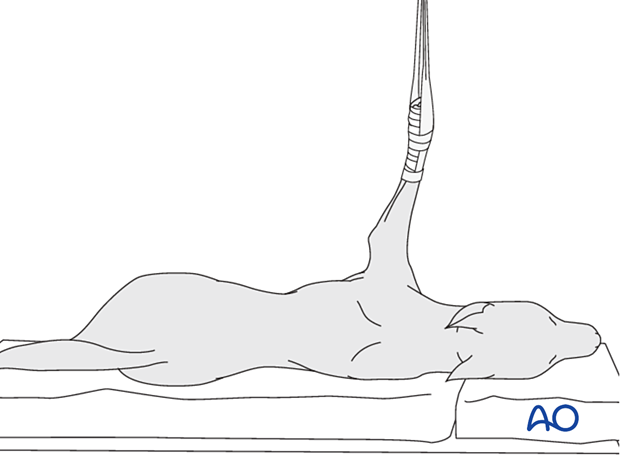
For more distal fractures, medial approach with the patient positioned in dorsal recumbency is preferred.
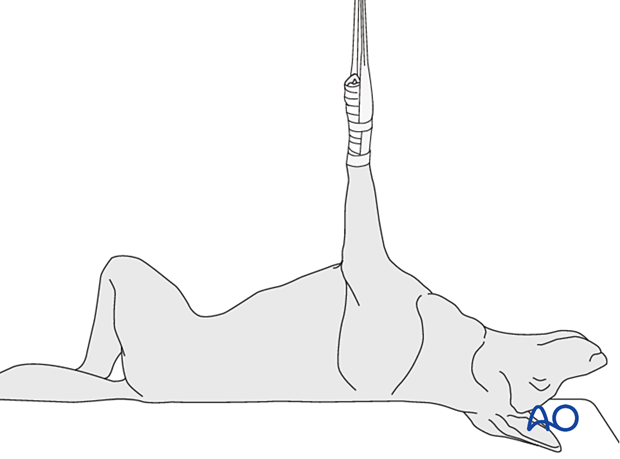
3. Cerclage wires
Initial cerclage wire fixation
The fracture is reduced with reduction forceps. The reduction is temporarily fixed with one or two pointed reduction forceps.
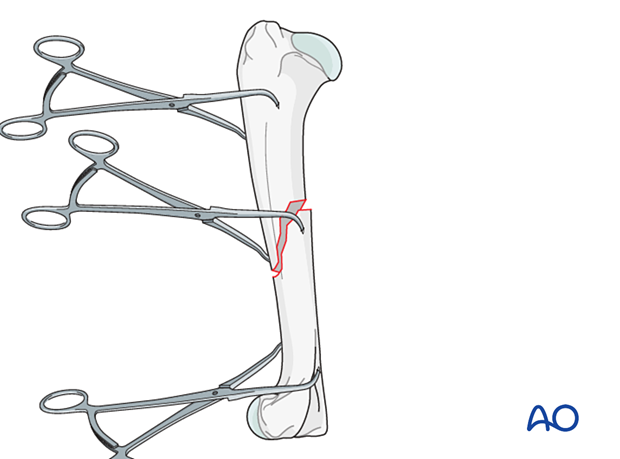
The fracture is stabilized with at least two cerclage wires.
Note: Care should be taken to place the twists/loops in the wire away from the site where the plate is to be applied.
Read more about cerclage wire application.
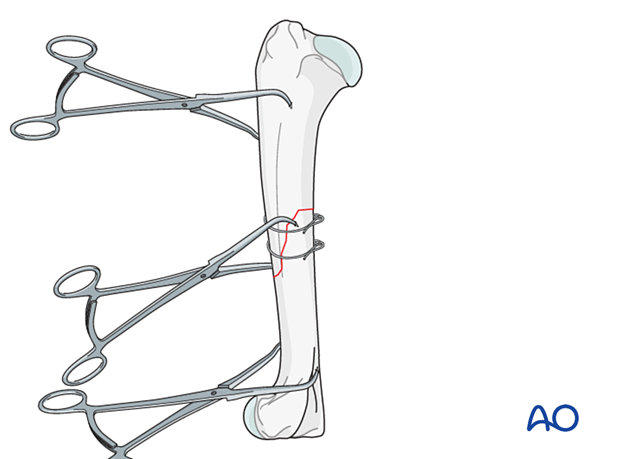
4. Neutralization plate
Plate selection
A plate with a neutralization function is used. The plate can either be a locking compression plate (LCP) or a dynamic compression plate (DCP).
The longest possible plate, considering soft tissue trauma and the approach, should be chosen. The plate's length should allow the placement of at least 3-4 screws in each major fragment.
Note: If using an LCP, contouring does not have to be as exact as when using a DCP.
Read more about plate preparation.
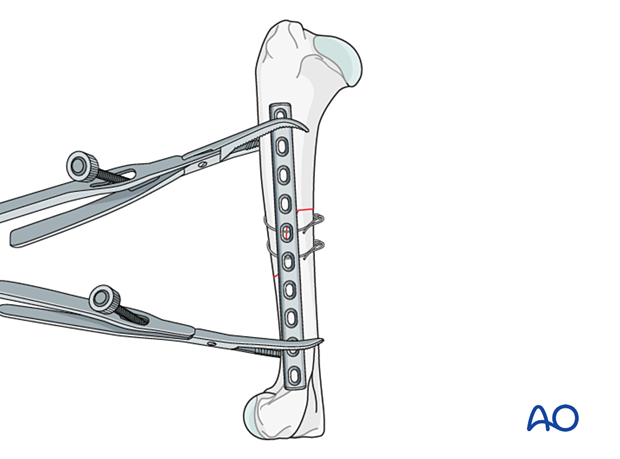
Plate application
Following contouring, the plate is applied to the lateral surface for more proximal fractures or the medial surface for more distal fractures.
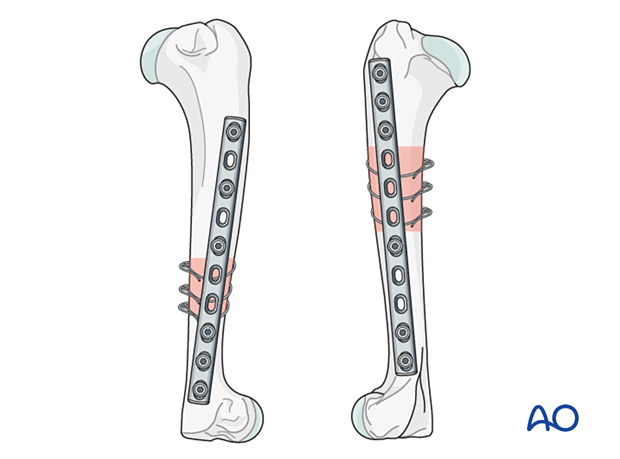
Two screws, one in the proximal fragment and one in the distal fragment, are inserted to ensure optimal alignment of the plate over the length of the bone.
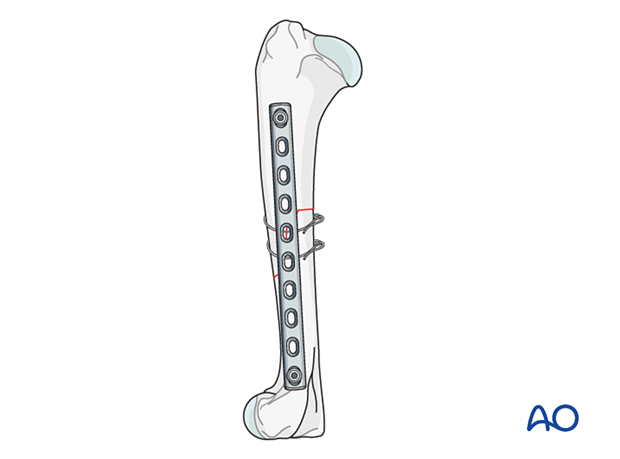
The first four screws are inserted alternatingly (one proximal, one distal) to fix the alignment.
The remaining screws are inserted according to the surgeon's preference.
All screws should be in either locking or neutral position.
Note: Cortical screws should be inserted prior to possible locking screws.

5. Case example
Approximately 6–9-month-old domestic long-haired feral cat with lame right thoracic limb following unknown trauma.
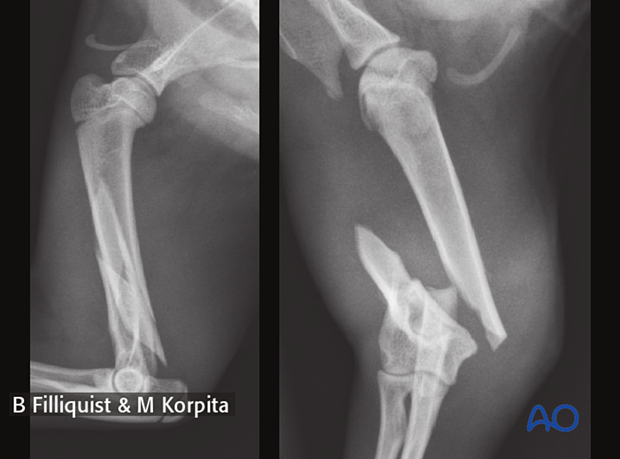
The 12-A2 fracture was fixed with double loop cerclage wires and a 9-hole 2.0 mm LCP used as a neutralization plate.
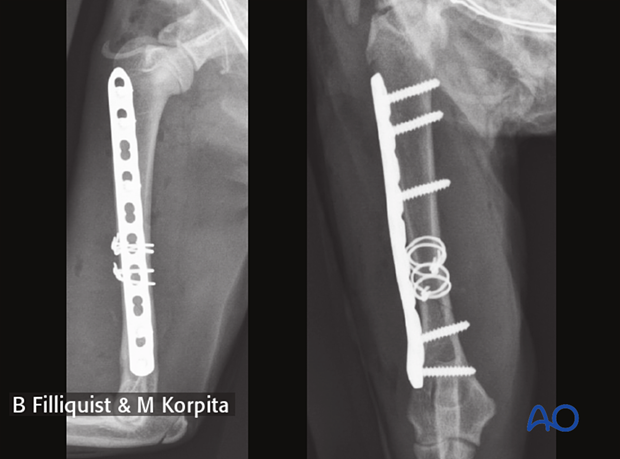
Follow-up radiographs six weeks after surgery show a healed fracture.
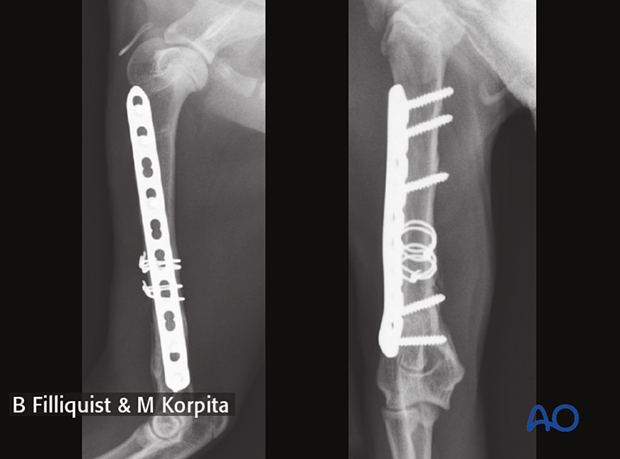
6. Aftercare
Phase 1: 1–3 days after surgery
The aim is to reduce edema, inflammation, and pain.
Integrative medical therapies, anti-inflammatory medication, and analgesics are recommended.
Note: Animals carry 2/3 of their weight on the front limb. Therefore, leash confinement or cage rest and no jumping are recommended for six weeks postoperatively.
Phase 2: 4–10 days after surgery
The aim is to resolve hematoma and edema, control pain, and prevent muscle contracture.
Anti-inflammatory and analgesic medications may still be needed. Rehabilitation and integrative medical therapies can be used.
A careful evaluation is recommended if the dog does not start to use the limb within a few days after surgery.
Early ambulation is aimed for.
Radial nerve neurapraxia may occur in some cases. This neurapraxia usually resolves within a few days.
Phase 3: > 10 days after surgery
10-14 days after surgery, the sutures are removed.
Radiographic assessment is performed every 4–8 weeks until bone healing is confirmed.
Note: It can be challenging to assess bone union on radiographs when bone healing occurs without callus formation.












